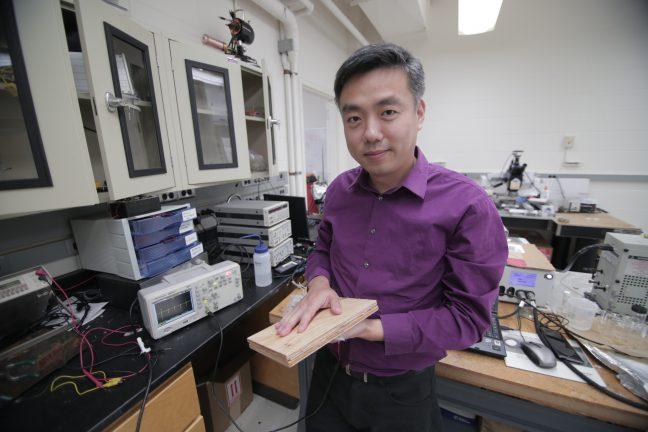New technology developed by University of Wisconsin material engineers enables floors to generate electricity by doing what they do best — getting stepped on.
Associate professor of material science and engineering Xudong Wang and his team have developed “green” flooring made from common materials that can generate electricity with every footstep. This flooring is inexpensive, renewable and made from the waste of other products.
This new technology harnesses a simple source of energy that is all around us: static electricity. The flooring materials have tiny fibers that are combined with a chemical treatment that attracts electrons, Wang said. When a walker steps on the “green floor,” these fibers come into contact with fibers that are not treated to generate a charge. The electrons are converted from one type of fiber to the other, which creates electricity.
A triboelectric nanogenerator, or TENG, generates electricity from the vibration of atoms, Wang said. While TENG technology is used in energy generating flooring, it is also the same phenomena that allows static electricity to form on clothing.
Electricity collected from the fibers is then converted into usable energy that can power lights or be stored in batteries for later use, Wang said. There are existing flooring materials that are able to capture energy from footsteps, but this new flooring is able to use less expensive and more eco-friendly materials.
“This flooring is cheap, recyclable and strong which meets the needs of regular manufacturing that won’t raise cost,” Wang said.
Green flooring is made from wood pulp, a material that is already commonly used in standard flooring. Wood pulp is a byproduct of other products and is inexpensive and abundant, Wang said. By using wood pulp to create energy, flooring that can generate electricity may actually be more affordable then flooring that doesn’t.
Electricity generated by footsteps can be converted into usable energy that can power lights and be stored in batteries. Wang said the prototype of the flooring he powered could power LED lights.
The possibilities for energy generating floors are endless. Wang said any area with high foot traffic will be able to generate usable energy. Stadiums, malls and any public place will be able to implement this flooring and use it to power lights in the building.
Mary Blanchard, Associate Director of the Wisconsin Energy Institution, said it is important to take advantage of all ways to renewably generate energy. Technologies like Wang’s can be used in collaboration with other ways of generating energy like solar and wind energy to reduce the use of fossil fuels.
“[Technologies] that enable us to take advantage of new sources of energy are ways to improve the environment,” Blanchard said.
Wang and his team published their research on flooring that generates energy in the Nano Energy Journal Sept. 24, and they have been been researching the technology that makes generating the energy from footsteps possible.
Now that it is possible to generate energy through footsteps, Wang plans to use UW as a test site. Wang said he hopes to create a large-scale model to demonstrate the potential that green flooring has. Since UW has many areas with high foot traffic, Wang said they want to see just how much power can be produced with this new technology.
Blanchard said the world uses a large amount of energy, and if there is any way to reduce the use of fossil fuels, it is beneficial.
“We really need all [alternative energy sources],” Blanchard said. “We need a strategy that uses as many different types of renewable and non-carbon sources to help address [our] energy needs.”


